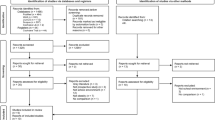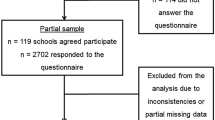Abstract
Objectives:
Schools are an important setting to enable and promote physical activity. Researchers have created a variety of tools to perform objective environmental assessments (or ‘audits’) of other settings, such as neighborhoods and parks; yet, methods to assess the school physical activity environment are less common. The purpose of this study is to describe the approach used to objectively measure the school physical activity environment across 12 countries representing all inhabited continents, and to report on the reliability and feasibility of this methodology across these diverse settings.
Methods:
The International Study of Childhood Obesity, Lifestyle and the Environment (ISCOLE) school audit tool (ISAT) data collection required an in-depth training (including field practice and certification) and was facilitated by various supporting materials. Certified data collectors used the ISAT to assess the environment of all schools enrolled in ISCOLE. Sites completed a reliability audit (simultaneous audits by two independent, certified data collectors) for a minimum of two schools or at least 5% of their school sample. Item-level agreement between data collectors was assessed with both the kappa statistic and percent agreement. Inter-rater reliability of school summary scores was measured using the intraclass correlation coefficient.
Results:
Across the 12 sites, 256 schools participated in ISCOLE. Reliability audits were conducted at 53 schools (20.7% of the sample). For the assessed environmental features, inter-rater reliability (kappa) ranged from 0.37 to 0.96; 18 items (42%) were assessed with almost perfect reliability (κ=0.80–0.96), and a further 24 items (56%) were assessed with substantial reliability (κ=0.61–0.79). Likewise, scores that summarized a school’s support for physical activity were highly reliable, with the exception of scores assessing aesthetics and perceived suitability of the school grounds for sport, informal games and general play.
Conclusions:
This study suggests that the ISAT can be used to conduct reliable objective audits of the school physical activity environment across diverse, international school settings.
This is a preview of subscription content, access via your institution
Access options
Subscribe to this journal
We are sorry, but there is no personal subscription option available for your country.
Buy this article
- Purchase on Springer Link
- Instant access to full article PDF
Prices may be subject to local taxes which are calculated during checkout


Similar content being viewed by others
References
Karnik S, Kanekar A . Childhood obesity: a global public health crisis. Int J Prev Med 2012; 3: 1–7.
World Health Organization. Obesity: Preventing and Managing the Global Epidemic. Report of a WHO consultation. World Health Organization: Geneva, Switzerland, 2000.
World Health Organization. Global status report on noncommunicable diseases. World Health Organization: Geneva, Switzerland, 2010; 164.
Waxman A . World Health Assembly. WHO global strategy on diet, physical activity and health. Food Nutr Bull 2004; 25: 292–302.
World Health Organization. Interventions on Diet and Physical Activity: What Works: Summary Report. World Health Organization: Geneva, Switzerland, 2009.
World Health Organization. Global Action Plan for the Prevention and Control of Noncommunicable Diseases 2013–2020. World Health Organization: Geneva, Switzerland, 2013.
World Health Organization. School Policy Framework: Implementation of the WHO Global Strategy on Diet, Physical Activity and Health. World Health Organization: Geneva, Switzerland, 2008.
World Health Organization. Prioritizing Areas for Action in the Field of Population-based Prevention of Childhood Obesity: a Set of Tools for Member States to Determine and Identify Priority Areas for Action. World Health Organization: Geneva, Switzerland, 2012.
Story M, Nanney MS, Schwartz MB . Schools and obesity prevention: creating school environments and policies to promote healthy eating and physical activity. Milbank Q 2009; 87: 71–100.
van Sluijs EM, Skidmore PM, Mwanza K, Jones AP, Callaghan AM, Ekelund U et al. Physical activity and dietary behaviour in a population-based sample of British 10-year old children: the SPEEDY study (Sport, Physical activity and Eating behaviour: environmental Determinants in Young people). BMC Public Health 2008; 8: 388.
Jones NR, Jones A, van Sluijs EM, Panter J, Harrison F, Griffin SJ . School environments and physical activity: The development and testing of an audit tool. Health Place 2010; 16: 776–783.
Lytle LA . Examining the etiology of childhood obesity: The IDEA study. Am J Community Psychol 2009; 44: 338–349.
Joint Consortium for School Health. Healthy School Planner. 2012. Available at www.healthyschoolplanner.uwaterloo.ca (accessed on 8 July 2014).
Cameron R, Manske S, Brown KS, Jolin MA, Murnaghan D, Lovato C . Integrating public health policy, practice, evaluation, surveillance, and research: the school health action planning and evaluation system. Am J Public Health 2007; 97: 648–654.
Centers for Disease Control and Prevention. School Health Policies and Practices Study (SHPPS). 2012. Available at www.cdc.gov/healthyyouth/shpps/index.htm (accessed on 8 July 2014).
Lee C, Kim HJ, Dowdy DM, Hoelscher DM, Ory MG . TCOPPE school environmental audit tool: assessing safety and walkability of school environments. J Phys Act Health 2013; 10: 949.
Nathan N, Wolfenden L, Morgan PJ, Bell AC, Barker D, Wiggers J . Validity of a self-report survey tool measuring the nutrition and physical activity environment of primary schools. Int J Behav Nutr Phys Act. 2013; 10: 75.
Turner K, Foster C, Allender S, Plugge E . A systematic review of how researchers characterize the school environment in determining its effect on student obesity. BMC Obesity 2015; 2: 13.
Brownson RC, Hoehner CM, Day K, Forsyth A, Sallis JF . Measuring the built environment for physical activity: state of the science. Am J Prev Med 2009; 36: S99–S123 e12.
Lytle LA . Measuring the food environment: state of the science. Am J Prev Med 2009; 36: S134–S144.
Katzmarzyk PT, Barreira TV, Broyles ST, Champagne CM, Chaput JP, Fogelholm M et al. The International Study of Childhood Obesity, Lifestyle and the Environment (ISCOLE): design and methods. BMC Public Health 2013; 13: 900.
Lipsitz SR, Parzen M, Fitzmaurice GM, Klar N . A two-stage logistic regression model for analyzing inter-rater agreement. Psychometrika 2003; 68: 289–298.
Landis JR, Koch GG . The measurement of observer agreement for categorical data. Biometrics 1977; 33: 159–174.
Lu L, Shara N . Reliability Analysis: Calculate and Compare Intra-class Correlation Coefficients (ICC) in SAS. NESUG: Baltimore, MD, USA, 2007.
Cicchetti DV . Guidelines, criteria, and rules of thumb for evaluating normed and standardized assessment instruments in psychology. Psychol Assess 1994; 6: 284–290.
Acknowledgements
We wish to thank the ISCOLE External Advisory Board and the ISCOLE participants and their families who made this study possible. A membership list of the ISCOLE Research Group and External Advisory Board is included in Katzmarzyk et al. (this Issue). ISCOLE was funded by The Coca-Cola Company. MF has received a research grant from Fazer Finland. AK has been a member of the Advisory Boards of Dupont and McCain Foods. RK has received a research grant from Abbott Nutrition Research and Development. VM is a member of the Scientific Advisory Board of Actigraph.
Author information
Authors and Affiliations
Consortia
Corresponding author
Ethics declarations
Competing interests
MF has received an honorarium for speaking for Merck. VM has received an honorarium for speaking for The Coca-Cola Company. TO has received an honorarium for speaking for The Coca-Cola Company. The remaining authors declare no conflict of interest.
Additional information
Supplementary Information accompanies this paper on International Journal of Obesity Supplements website
Rights and permissions
About this article
Cite this article
Broyles, S., Drazba, K., Church, T. et al. Development and reliability of an audit tool to assess the school physical activity environment across 12 countries. Int J Obes Supp 5 (Suppl 2), S36–S42 (2015). https://doi.org/10.1038/ijosup.2015.17
Published:
Issue Date:
DOI: https://doi.org/10.1038/ijosup.2015.17
This article is cited by
-
Are the correlates of active school transport context-specific?
International Journal of Obesity Supplements (2015)
-
Relationships between active school transport and adiposity indicators in school-age children from low-, middle- and high-income countries
International Journal of Obesity Supplements (2015)



